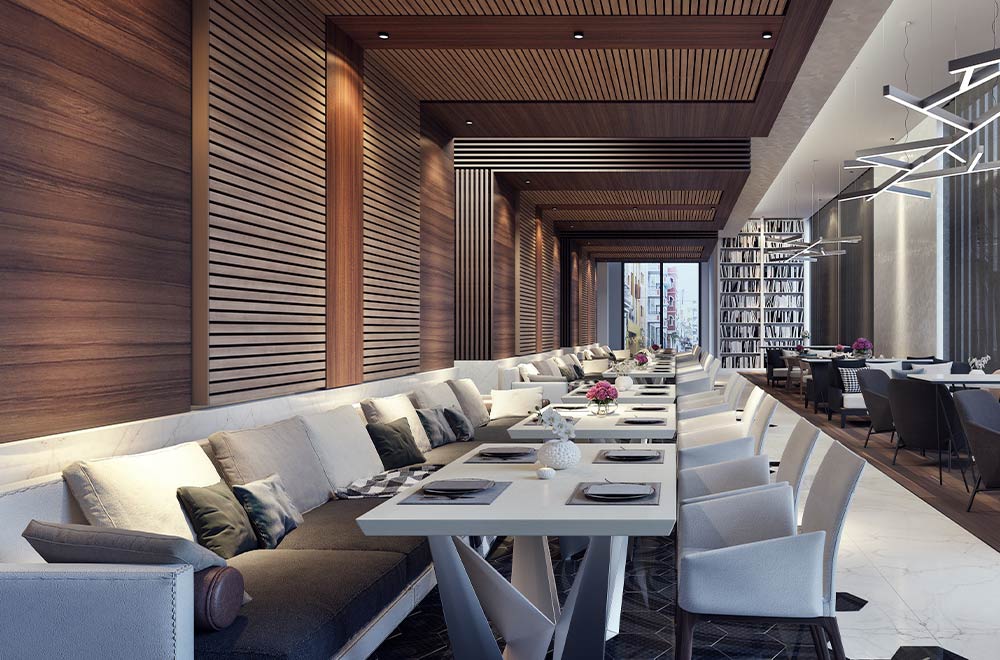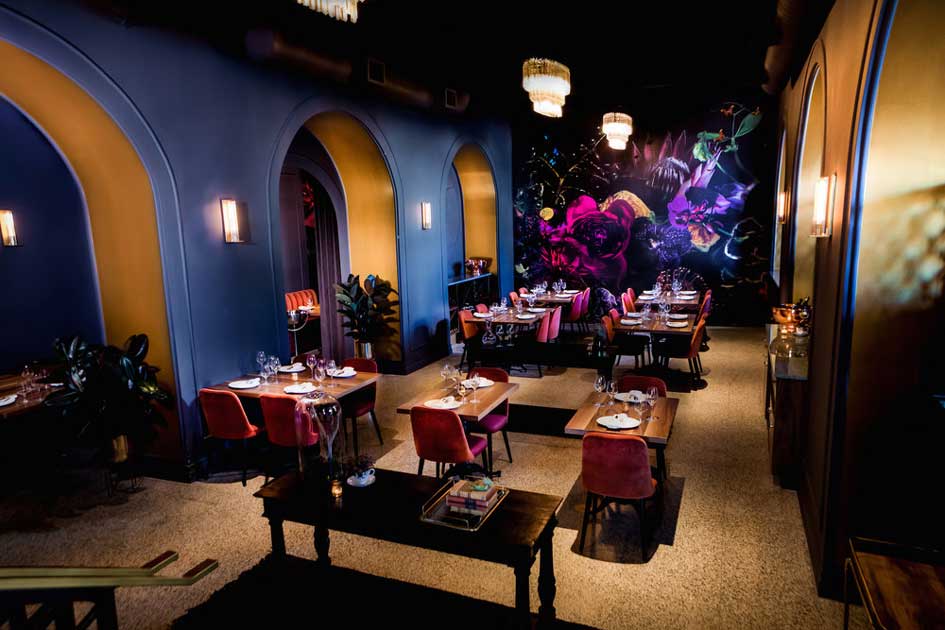Romantic Restaurants Islamabad: Suitable Dining Destinations for Couples
Romantic Restaurants Islamabad: Suitable Dining Destinations for Couples
Blog Article
Savor Genuine Oriental Food With a Pan-Asian Spin for a Culinary Experience
Beginning on a cooking journey with genuine Oriental cuisine, improved with a Pan-Asian spin, supplies an unique opportunity to explore the rich tapestry of flavors that specify the area's varied cooking traditions. As you contemplate these enticing dishes, consider the cultural stories and historical impacts that form them, each bite providing a story waiting to be found. pan asian dining Islamabad.

Exploring Pan-Asian Tastes
In the realm of global gastronomy, Pan-Asian food sticks out for its amazing variety and the unified interplay of tastes from different Eastern cultures. This cooking method celebrates the abundant customs and special components discovered across the continent, developing a tapestry of preferences that is both satisfying and interesting. Trick to Pan-Asian cuisine is its ability to balance different flavors-- pleasant, salty, spicy, and sour-- while highlighting the freshness and top quality of each active ingredient.
From the umami-rich soy sauce of Japan to the fiery chili peppers of Thailand, Pan-Asian food supplies a comprehensive combination of tastes. These elements are typically integrated in inventive methods, improving recipes with layers of intricacy. For example, the use of fragrant herbs such as lemongrass and cilantro, typical in Vietnamese and Thai food, adds a rejuvenating illumination to dishes, while the unification of coconut milk provides a velvety, rich structure.
The focus on fresh fruit and vegetables and fragrant spices guarantees that each meal is not just a feast for the taste buds but also for the senses. Pan-Asian cuisine invites diners to start a cooking trip, exploring the vast and varied landscapes of Eastern gastronomy with every bite.
Combination Meals to Attempt
While Pan-Asian food is commemorated for its conventional flavors, the contemporary culinary landscape is increasingly welcoming combination dishes that mix these traditional elements with impacts from other regions. This innovative strategy not only honors the abundant heritage of Asian cooking arts however additionally introduces unique taste experiences that appeal to modern palates.
A prime example of such a blend meal is the Korean-Mexican taco, where seasoned bulgogi beef is wrapped in a cozy tortilla, topped with kimchi and a zesty gochujang-infused salsa. This combination weds the bold, mouthwatering tastes of Korea with the vivid, fresh aspects of Mexican cuisine. Likewise, sushi burritos have actually acquired appeal, joining together the delicate virtuosity of Japanese sushi with the hearty, hand-held benefit of a burrito, usually including fusion components like tempura shrimp and avocado with a drizzle of wasabi mayo.
One more significant recipe is Thai curry ramen, which infuses the luscious, fragrant spices of Thai curry right into the reassuring brew of traditional Japanese ramen, creating a harmonious mix that tantalizes the senses. These combination meals expand beyond simple uniqueness; they stand for a cooking dialogue between cultures, motivating exploration and technology in the globe of Pan-Asian food.
Essential Active Ingredients and Seasonings
To really value Pan-Asian food, one need to understand the necessary components and seasonings that form its structure. This varied cooking design attracts from an abundant tapestry of Eastern customs, employing a harmonious blend of flavors and appearances. Key active ingredients consist of soy sauce, fish sauce, and oyster sauce, which present a full-flavored umami deepness vital to Eastern recipes. Corresponding to these are rice vinegar and mirin, lending a delicate acidity and sweetness.
Fragrant aspects are pivotal, with garlic, lemongrass, and ginger being ubiquitous throughout various Pan-Asian recipes. These active ingredients supply an aromatic base that more helpful hints improves the intricacy of flavors. Spices such as celebrity anise, cardamom, and cinnamon introduce heat and character, echoing influences from regions like China and India.

Cooking Methods and Tips
Mastering the art of Pan-Asian food needs experience with its unique cooking methods, each adding to the vivid tapestry of flavors this culinary custom is celebrated for. Central to these methods is the stir-fry, a fast cooking method that preserves the nutritional stability and dazzling shades of components. Utilizing a wok, the stir-fry method allows for even warm circulation, necessary for attaining the particular appearance and flavor equilibrium of Pan-Asian recipes.
An additional fundamental strategy is steaming, particularly prevalent in Chinese cuisine. This gentle approach keeps the natural tastes and nutrients of active ingredients, making it ideal for fish and shellfish and veggies. Dumplings, a cherished staple, often benefit from steaming, resulting in soft, delicious appearances.
Cooking, additionally important, passes on great smoky depths to dishes such as Oriental bulgogi or Japanese yakitori (Best ambiance restaurants Islamabad). This technique frequently involves marinating active ingredients, enabling tastes to penetrate deeply prior to food preparation over an open flame or hot plate
Lastly, understanding the art of balancing flavors-- pleasant, sour, salted, bitter, and umami-- is vital. Correctly layering these elements can raise a meal from normal to remarkable, offering a facility and satisfying culinary experience that personifies the significance of Pan-Asian cuisine.
Eating Experiences Worldwide
Across the world, Pan-Asian cuisine provides an exceptional dining experience, celebrated for its rich tapestry of flavors and dynamic presentations. This culinary sensation has gone beyond social borders, catching the hearts and palates of food fanatics worldwide. In worldwide cities fresh York, London, and Sydney, Pan-Asian dining establishments function as melting pots where cooking customs from Thailand, Japan, China, and beyond merge, supplying diners with an eclectic mix of meals that highlight the region's diversity.
The global allure of Pan-Asian official statement food depends on its capacity to offer both credibility and innovation. Chefs masterfully marry typical ingredients such as lemongrass, soy sauce, and miso with contemporary methods, causing dishes that are both refreshingly new and acquainted. This fusion allows diners to start a cooking trip that appreciates heritage while welcoming modernity.
In addition, eating experiences are boosted with attentively designed atmospheres that reflect the ethos of Pan-Asian looks. From minimal Japanese-inspired interiors to vibrant Thai-themed areas, each restaurant provides an one-of-a-kind atmosphere that matches the culinary offerings. Therefore, customers are not simply consuming a dish however partaking in a social experience, making Pan-Asian dining a really international sensation.
Verdict
The expedition of Pan-Asian cuisine uses a profound understanding of the complex interplay of tastes and culinary traditions across Asia. By embracing fusion dishes such as Thai curry ramen and sushi burritos, the culinary trip not only highlights the adaptability of standard ingredients yet also showcases innovative modern-day strategies. This gastronomic adventure, enriched by cooking techniques and vital spices, offers a distinct possibility to appreciate the multiculturalism and culinary virtuosity that define Pan-Asian food on an international range.
Getting started on a cooking trip with genuine Oriental cuisine, improved with a Pan-Asian spin, offers an one-of-a-kind chance to explore the rich tapestry of tastes that specify the area's varied culinary customs.In the world of international gastronomy, Pan-Asian cuisine stands out for its exceptional diversity and the harmonious interplay of flavors from numerous Oriental cultures. Key to Pan-Asian food is its ability to balance look at this website different tastes-- pleasant, salty, spicy, and sour-- while highlighting the freshness and high quality of each active ingredient.

Report this page